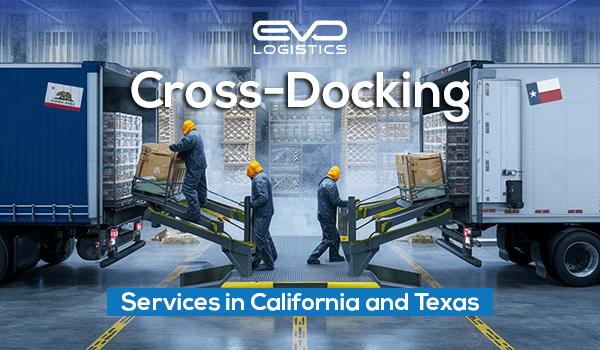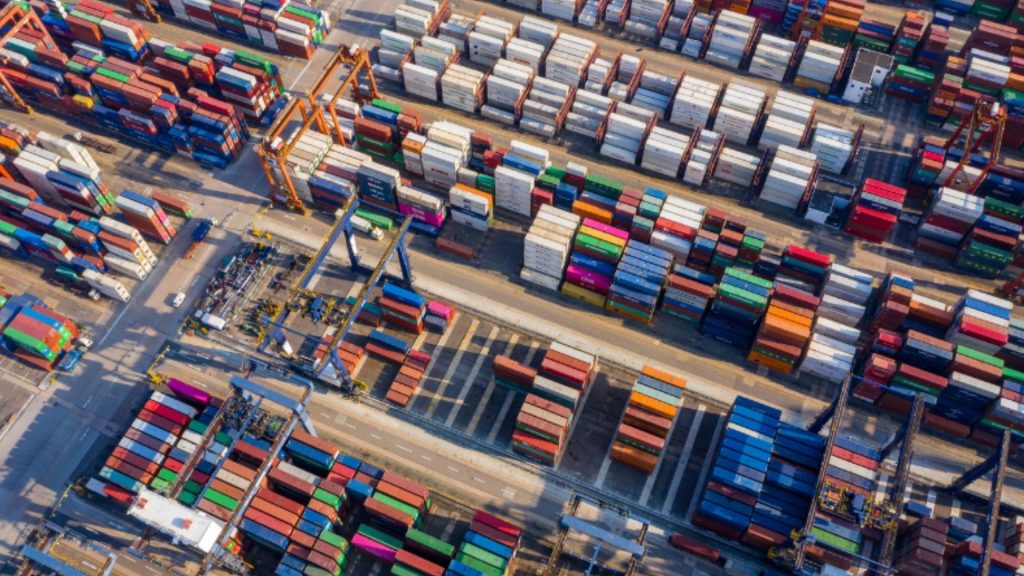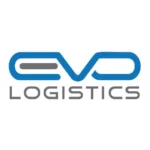Cross-Docking Services in California and Texas

Introduction to Cross-Docking
Cross-docking is a logistics strategy that involves unloading goods from inbound delivery vehicles and directly loading them onto outbound vehicles, with minimal or no storage time. This process reduces handling, storage costs, and speeds up delivery times. By eliminating the warehousing step, cross-docking streamlines the supply chain, making it more efficient and cost-effective. In the rapidly evolving world of logistics, cross-docking has emerged as a vital practice for businesses aiming to enhance their distribution processes.
Benefits of Cross-Docking Services
The advantages of cross-docking services are manifold, contributing significantly to the efficiency of supply chains. Primarily, cross-docking reduces storage costs by minimizing or eliminating the need for warehousing. This reduction in storage requirements translates into significant cost savings for businesses. Additionally, cross-docking enhances delivery speed. Goods spend less time in transit, resulting in quicker order fulfillment and improved customer satisfaction. This process also decreases handling costs, as products are directly transferred from one vehicle to another, reducing labor and potential damage. Furthermore, cross-docking can lead to better inventory management, with goods moving more swiftly through the supply chain, reducing the risk of obsolescence and excess inventory.

How Cross-Docking Works
The cross-docking process involves several key stages. Initially, products arrive at a cross-docking facility via inbound trucks or containers. These goods are then quickly sorted and assigned to outbound vehicles based on their destination. In a seamless operation, the products are transferred from the inbound dock to the outbound dock, often without spending significant time in storage. This rapid transfer relies on precise coordination and efficient handling. Technology plays a crucial role in managing this process, with advanced tracking systems and automated sorting mechanisms ensuring smooth operations. Ultimately, the success of cross-docking hinges on careful planning, real-time communication, and meticulous execution.
Types of Cross-Docking
There are several types of cross-docking, each serving different purposes within the supply chain. Continuous cross-docking involves the direct transfer of products from inbound to outbound transportation without storage. This method is ideal for fast-moving goods and time-sensitive deliveries. Consolidation cross-docking, on the other hand, involves combining products from multiple sources into a single shipment, optimizing transportation costs and reducing the number of deliveries. Deconsolidation cross-docking breaks down large shipments into smaller, more manageable loads, which are then distributed to various destinations. Each type of cross-docking offers unique benefits, depending on the nature of the goods and the specific logistics requirements.
Cross-Docking in California
California, with its strategic location and robust transportation infrastructure, is a prime hub for cross-docking services. The state’s extensive network of highways, ports, and airports facilitates efficient movement of goods, making it an ideal location for cross-docking operations. California’s economy, driven by sectors such as technology, agriculture, and retail, benefits significantly from the streamlined logistics provided by cross-docking. Businesses in California leverage cross-docking to enhance their supply chain efficiency, reduce costs, and meet the high demands of fast-paced markets. The state’s commitment to innovation and sustainability further supports the growth of cross-docking services.
Major Cross-Docking Hubs in California
Several key locations in California serve as major cross-docking hubs. Los Angeles, with its proximity to major ports and a vast transportation network, is a critical hub for cross-docking activities. The Port of Los Angeles and Long Beach handle significant volumes of international trade, making the region a pivotal point for cross-docking operations. Additionally, the Central Valley, known for its agricultural production, utilizes cross-docking to streamline the distribution of perishable goods. Other notable hubs include San Francisco and San Diego, which also benefit from strategic locations and robust logistics infrastructure. These hubs play a vital role in supporting efficient supply chains across California.
Cross-Docking in Texas
Texas, with its expansive geography and booming economy, is another significant center for cross-docking services. The state’s diverse industries, including oil and gas, manufacturing, and retail, rely on efficient logistics solutions to maintain competitiveness. Texas’s central location in the United States makes it an ideal hub for distributing goods nationwide. Cross-docking services in Texas help businesses reduce costs, improve delivery times, and enhance overall supply chain efficiency. The state’s commitment to infrastructure development, combined with its strong economic growth, creates a conducive environment for cross-docking operations to thrive.
Major Cross-Docking Hubs in Texas
Key cross-docking hubs in Texas include cities such as Dallas, Houston, and San Antonio. Dallas, with its central location and extensive transportation network, serves as a major logistics hub for both national and international trade. The city’s proximity to major highways and railroads enhances its cross-docking capabilities. Houston, home to one of the largest ports in the United States, plays a crucial role in cross-docking activities, particularly for international shipments. San Antonio, with its strategic position and growing industrial base, also serves as a vital hub for cross-docking services. These cities, supported by robust infrastructure, facilitate efficient distribution and logistics operations.
Role of Technology in Cross-Docking
Technology plays an indispensable role in optimizing cross-docking operations. Advanced tracking systems, automated sorting mechanisms, and real-time data analytics enhance the efficiency and accuracy of cross-docking processes. Radio Frequency Identification (RFID) technology, for instance, enables precise tracking of goods, reducing errors and improving inventory management. Warehouse Management Systems (WMS) and Transportation Management Systems (TMS) integrate various logistics functions, ensuring seamless coordination between inbound and outbound shipments. The use of robotics and automation further streamlines handling processes, reducing labor costs and enhancing speed. Overall, technology is a key enabler of efficient and effective cross-docking services.
Challenges in Cross-Docking Services
Despite its many benefits, cross-docking is not without challenges. One significant obstacle is the need for precise coordination and timing. Delays in inbound shipments can disrupt the entire cross-docking process, leading to inefficiencies. Additionally, cross-docking requires a high level of expertise and real-time communication to ensure smooth operations. Another challenge is the potential for increased handling, which can lead to damage if not managed properly. Overcoming these challenges involves robust planning, investment in technology, and continuous improvement practices. Businesses must also train their staff effectively and develop contingency plans to mitigate risks associated with cross-docking operations.
Future Trends in Cross-Docking
The future of cross-docking is poised to be shaped by several emerging trends. One notable trend is the increasing adoption of automation and robotics, which enhance speed and accuracy in handling goods. Another trend is the integration of Artificial Intelligence (AI) and Machine Learning (ML) to optimize routing and scheduling, further improving efficiency. Sustainability is also becoming a key focus, with businesses seeking eco-friendly practices to reduce their environmental footprint. Additionally, the rise of e-commerce is driving the demand for faster and more efficient distribution methods, positioning cross-docking as a critical component of modern supply chains. As these trends evolve, cross-docking will continue to adapt and innovate, meeting the ever-changing needs of the logistics industry.
Choosing the Right Cross-Docking Partner
Selecting the right cross-docking partner is crucial for achieving optimal efficiency and cost savings. Key criteria to consider include the partner’s experience, technological capabilities, and track record of reliability. It’s important to assess their infrastructure and capacity to handle your specific logistics needs. Additionally, the partner’s commitment to sustainability and innovation can be a significant advantage. Conducting thorough due diligence, including site visits and reference checks, helps ensure you choose a partner that aligns with your business goals. A reliable cross-docking partner not only enhances your supply chain efficiency but also contributes to overall customer satisfaction.
Regulatory Considerations for Cross-Docking
Compliance with regulatory requirements is a critical aspect of cross-docking operations. Businesses must ensure adherence to transportation and logistics regulations, including safety standards, labor laws, and environmental guidelines. In California and Texas, specific regulations may impact cross-docking practices, such as emission standards and labor regulations. Staying informed about regulatory changes and maintaining compliance is essential for smooth operations. Partnering with experienced cross-docking providers who understand the regulatory landscape can help mitigate risks and ensure compliance. By prioritizing regulatory considerations, businesses can avoid legal issues and maintain efficient cross-docking operations.
Impact of E-commerce on Cross-Docking
The rapid growth of e-commerce has significantly impacted cross-docking practices. With the increasing demand for faster delivery times, cross-docking provides a critical solution for e-commerce businesses. By minimizing storage time and expediting order fulfillment, cross-docking helps meet the expectations of online shoppers. The integration of cross-docking with e-commerce logistics ensures efficient handling of high order volumes and diverse product ranges. This synergy enhances the competitiveness of e-commerce businesses, enabling them to offer reliable and timely delivery services. As e-commerce continues to evolve, cross-docking will play an increasingly important role in supporting efficient and responsive logistics operations.
Conclusion
In conclusion, cross-docking services in California and Texas offer significant advantages for businesses aiming to enhance their supply chain efficiency. By reducing storage costs, improving delivery times, and streamlining logistics, cross-docking supports competitive and responsive operations. The strategic locations and robust infrastructure in California and Texas provide ideal environments for cross-docking activities. As technology and industry trends continue to evolve, cross-docking will remain a vital logistics strategy. Businesses that leverage the benefits of cross-docking can achieve superior supply chain performance, cost savings, and enhanced customer satisfaction.
Centrally Located Cold Storage Solutions
Interested in learning about how our cold storage facilities can help your business? Reach out to our team today!

Get in touch with us today to learn more about how Evo Logistics’ climate controlled storage facilities can help your business thrive in the frozen storage logistics industry.
Our team understands the importance of being committed to ensuring the quality of our customer’s product is at its best throughout the shipping process. Our dedicated staff are trained to monitor and operate around the clock 24 hours a day, 365 days a year. With a focus on fast and timely delivery along with GPS tracking, we work to provide consistent satisfaction to our customers.




